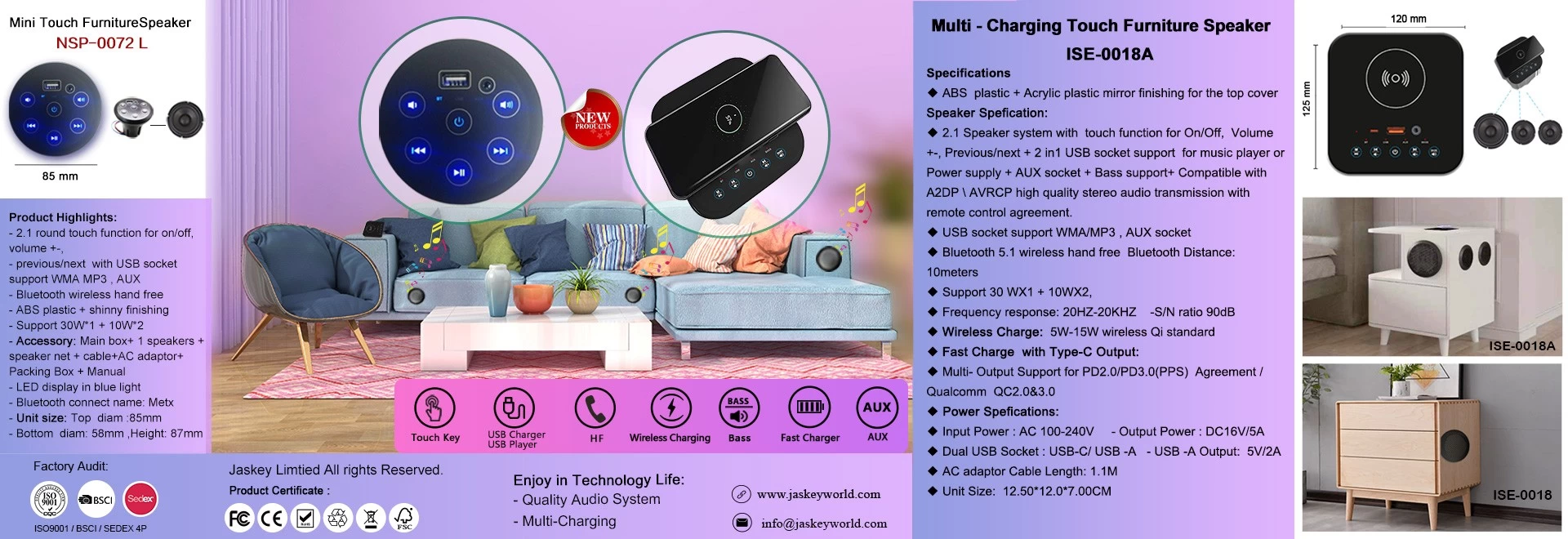Wi-Fi high-altitude How far away from us?
Wen / Great Southern
Local surface WIFI hotspot construction work carried out in full swing on the occasion, we also began eyeing meters altitude. In today's ubiquitous wireless networks, the aircraft has to be the last one virgin. Fly passengers, the proportion of high-end customers are usually relatively high, there is now a growing number of airlines and network operators begin to think and try to tap the high-altitude WIFI business model.
The day before yesterday, the Shanghai MU5101 flight to fly to Beijing on China Eastern Airlines offers WIFI Internet access, there are about 80 passengers trial, which is China's first space satellite broadband connectivity to commercial test flights.
In fact, the CEA is not the first domestic airline to try aerial WIFI. As early as last July, Air China has been based on the Inmarsat aeronautical satellite L-Band satellite communications systems communications solutions aerial WIFI experimental exploration on some flights. In April this year, and launched a ground and air more compelling broadband applications testing, but that is used in China Mobile's 4G technology.
In addition, Hainan Airlines, China Southern Airlines and other airlines also have to carry out their own tests and trials altitude WIFI service. Statistics show that China's civil aviation is now nearing an annual passenger transport 400 million passengers, such as flying 2.5 hours per capita basis, there are nearly one billion hours a year of high-altitude time. Average high quality customer base, almost empty market, which perhaps is a new blue ocean.
But the situation at home and abroad, as well as a number of technical limitations, the business model, and this piece of blue ocean market is not so easy to eat.
WIFI developments abroad altitude
Empty broadband services to aircraft in foreign countries has almost 10 years of development time. Back in 2005, Boeing has developed the Connexion system that can provide WIFI service on the plane. By 2014, at least abroad has more than 1,800 airplanes equipped with WIFI function.
Technically speaking, there are two main mainstream altitude WIFI technology. One is the use of communications satellites transmit signals, such as China Eastern Airlines flight is to take advantage of the the 6th Asia-Pacific Satellite Ku-band transponders to achieve WIFI service, the actual bandwidth limit reached 32M. Another is to empty the Internet, air emission signal from the ground station like. For example, Air China has been tested using 4G technology provides high-altitude WIFI belongs to this technology.
From a business model, the major foreign airlines have also done a lot of exploration, and now the main form of three main business models: one direct charging mode is divided into two forms of long-time charges and fees according to package; The second is to provide free basic services, have to pay value-added personalized services; Third, the introduction of shopping, entertainment video collaboration resources through other ways to make money.
For example, United Airlines launched from an altitude of 2012 WIFI service will follow the length of flight time fee ranging from 3.99 - 19.99 dollars. And on Lufthansa machine WIFI service charges $ 15 per hour to passengers. After the service was launched, has been widely welcomed by business customers.
Market research firm In-Stat has been done specifically on high-altitude WIFI market survey results show that in 2010 the international community has about 8% of the route is equipped with a wireless network, revenue is expected to bring the service in 2015 to reach 15 per year billion. Gross profit is not high on the aviation industry, is indeed a big gold mine.
Domestic situation
WIFI high altitude in the country is fairly new thing, the major airlines in the past two years will begin preliminary attempt, basically not reached the stage of large-scale commercial.
Technical implementation is not really the biggest constraint, whether it is good communications satellite docking, docking in space or, are relatively mature technology, but there are a lot of successful experience of foreign countries can learn from. Restrictive policies and regulations, as well as the business model is not clear many airlines concerns.
In fact, the National Civil Aviation Authority has also been taken into account to solve the problem of aircraft and ground communications. Back in 2012 the Civil Aviation Authority has issued a "blank satellite communications company operating control plan", but mainly in order to solve the problem of a single aircraft and ground communications, did not relate to passenger communications services section. Delineated in the program timetable, before the end of 2016 provisions to all aircraft must be completed in accordance with the requirements conversion plan, mainly to meet the requirements of operational control communication links.
The program mainly two noteworthy.
First, the starting point of the problem. In essence, provided they have a satellite communication capabilities, in addition to meeting operational control communication requirements, in fact, provide passengers with a broadband service conditions. Of course, in the implementation of the bandwidth, the device will certainly demand more, putting greater. However, the program did not mention it.
Second, the main idea is to achieve air-ground communications via satellite, did not involve the use of another program to empty 4G technology connection.
Up to now, although foreign airlines have introduced WIFI services already on the plane, or even a phone service, but it seemed that the CAA has not yet issued recommendations for guidance and program integrity, the basic major airlines themselves groping .
So we could see, there have been more and more airlines even begin to try to provide aerial WIFI service, but limits is not small. Generally, only computers and tablet PCs and other devices are allowed to connect, the phone still is not allowed to boot. Meanwhile, airlines are often more conservative attitude, reluctant to disclose too much information outside.
Technical limitations and uncertainties in the business model
Technically, if you simply realize WIFI coverage is not a problem, but how to ensure the speed and stability of the connection is not so easy.
Whether or 4G air satellite communications network, the maximum speed can reach 30m, from a digital point of view is not bad, but it does not mean no problem.
First, the bandwidth is shared bandwidth. The more people access to the Internet, the less bandwidth resources of every person Tandao. If a flight has 200 people, everyone is online, then speed is greatly reduced. Perhaps brush microblogging see micro-channel is no problem, but you want to use online video, online games and other high-bandwidth services to the estimated resource requirements would unlikely.
Rate on the one hand, the stability of the connection and on the other hand. If you are using 4G technology provides high-altitude WIFI, when the aircraft is flying in a large area, especially when flying cross, how to ensure the timely switch signals between base stations, to ensure the stability of the signal, for operators is a very big challenge. The use of satellite communications is also a problem, many testers have said that when the plane bumps or through the clouds at the time, the signal will then poorly, or even impossible to access.
If you want the experience to achieve the same degree of high-altitude WIFI standard ground, airlines, operators are still a very long way to go.
No clear business model has made many companies are still hesitating.
If you want to provide WIFI coverage in the aircraft, it is necessary to transform the aircraft, an aircraft renovation cost at least hundreds of thousands, or even millions. If you want to transform each aircraft are needed input costs are enormous. The altitude WIFI simple as a free service, then force airlines might not be so full, there must be clear enough to support the business model, high-altitude flight WIFI are likely to become standard in the major.
In the commercial test flight, the basic major domestic airlines WIFI services are free, is more tentative operation, in order to further explore the future to provide feedback.
From spending habits, it is also a big difference exists between domestic users and foreign users. Whether package mode, time and billing model, or to create value-added personalized services revenue for airlines is a new subject. Received expensive, potential users do not buy it, charge less, this business may well worthwhile.
So the status quo is, we all want to do, but do not know what to do, are feeling the stones.
Altitude WIFI, Blue Ocean is indeed an emerging market, but also have enough imagination, but before the Civil Aviation Authority for further guidance out there, there is a good enough business model before it, the large-scale commercial and perhaps just a high-altitude WIFI good imagination. Everyone on the plane can be convenient Internet access, so there is truly a scene from a very long time.











